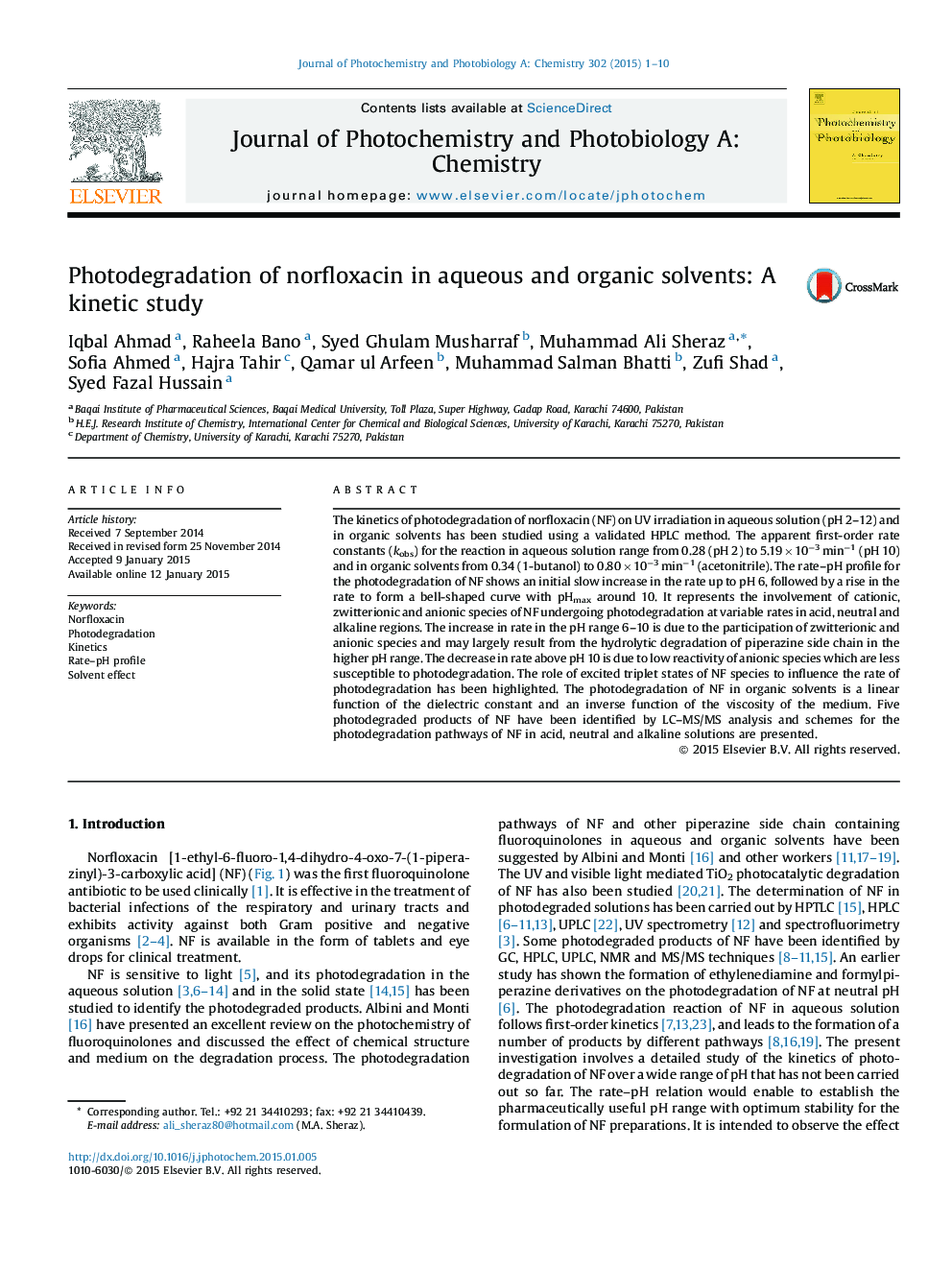| Article ID | Journal | Published Year | Pages | File Type |
|---|---|---|---|---|
| 25855 | Journal of Photochemistry and Photobiology A: Chemistry | 2015 | 10 Pages |
•The kinetics of photodegradation of norfloxacin (NF), over a wide range of pH has been studied to establish the pharmaceutically useful pH range for the formulation of NF preparations.•Five identified photodegraded products of NF in aqueous solution provide an insight into the mode of degradation of the molecule involving piperazine side chain.•The role of excited triplet states of different ionic species of NF in determining the rates of reaction in a particular pH range has been highlighted.•Pathways for the sequence of reactions involved in the photodegradation of NF in acid, neutral and alkaline media have been proposed.•The photodegradation of NF in organic solvents and the polarity and viscosity considerations are important for the drugs incorporated in pharmaceutical systems.
The kinetics of photodegradation of norfloxacin (NF) on UV irradiation in aqueous solution (pH 2–12) and in organic solvents has been studied using a validated HPLC method. The apparent first-order rate constants (kobs) for the reaction in aqueous solution range from 0.28 (pH 2) to 5.19 × 10−3 min−1 (pH 10) and in organic solvents from 0.34 (1-butanol) to 0.80 × 10−3 min−1 (acetonitrile). The rate–pH profile for the photodegradation of NF shows an initial slow increase in the rate up to pH 6, followed by a rise in the rate to form a bell-shaped curve with pHmax around 10. It represents the involvement of cationic, zwitterionic and anionic species of NF undergoing photodegradation at variable rates in acid, neutral and alkaline regions. The increase in rate in the pH range 6–10 is due to the participation of zwitterionic and anionic species and may largely result from the hydrolytic degradation of piperazine side chain in the higher pH range. The decrease in rate above pH 10 is due to low reactivity of anionic species which are less susceptible to photodegradation. The role of excited triplet states of NF species to influence the rate of photodegradation has been highlighted. The photodegradation of NF in organic solvents is a linear function of the dielectric constant and an inverse function of the viscosity of the medium. Five photodegraded products of NF have been identified by LC–MS/MS analysis and schemes for the photodegradation pathways of NF in acid, neutral and alkaline solutions are presented.
Graphical abstractFigure optionsDownload full-size imageDownload as PowerPoint slideNorfloxacin undergoes photodegradation in aqueous solution by oxidation, deamination, piperazine ring cleavage and other reactions to form several degradation products through photoexcitation of its cationic, zwitterionic and anionic species.
